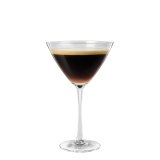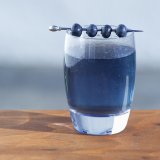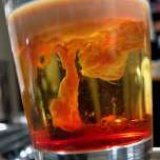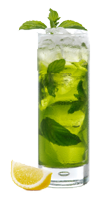 Combining chemistry and cocktails may sound dangerous. However, mixologists are using scientific principles to manipulate the flavor and texture of their creations. Known as molecular mixology, this new style of cocktail-making includes things like powdered rum and coke, martini popsicles, alcoholic cotton candy and whiskey hamburgers.
Combining chemistry and cocktails may sound dangerous. However, mixologists are using scientific principles to manipulate the flavor and texture of their creations. Known as molecular mixology, this new style of cocktail-making includes things like powdered rum and coke, martini popsicles, alcoholic cotton candy and whiskey hamburgers.
Simpler concoctions include upscale Jell-O shots and spherical “ice cubes” that are actually frozen cocktails. Inspired by the culinary discipline of molecular gastronomy, cocktail chemists have applied many tricks of the restaurant trade to the bar in the form of gelatins, foams and sorbets. (For extra credit, you can read about the history of molecular mixology.)
Molecular mixology merges science and booze to take advantage of chemical reactions. For example, liquid nitrogen, in addition to being cold enough to freeze alcohol, also intensifies it upon melting. An expert mixologist could make a specialty shot that appeared to be served in an edible balloon rather than a glass, thanks to the chemical properties of sodium alginate and calcium lactate.
 Despite the growing popularity of molecular cocktails, the time and expense involved in making them means it is difficult to find a bar that serves them. But many bartenders are incorporating some molecular mixology ideas to spice up their martini repertoire or add flair to traditional cocktail offerings.
Despite the growing popularity of molecular cocktails, the time and expense involved in making them means it is difficult to find a bar that serves them. But many bartenders are incorporating some molecular mixology ideas to spice up their martini repertoire or add flair to traditional cocktail offerings.
Tune in next week for some molecular mixology recipes you can try at home!
Update: Vessel 75 recipe
Here are a few bars that serve molecular cocktails, according to menus on their websites:
- Barton G in Miami Beach
- Tailor in New York
- Nineteen12 in Beverly Hills
- The Drop in Kansas City, Missouri
- David Burke’s Primehouse in Chicago
Photos by Spirits and Cocktails and Esquire.











